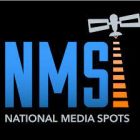A series of articles written by our EdTech Strategy Advisor, Dr. Rachel Schechter, on how to #ActivateEngagement During Virtual Live Events during virtual events utilizing our video platform, production, and studio services.
Article 1:
How to #ActivateEngagement During Virtual Live Events: Tips from Learning Sciences
For companies facing the pandemic, changing every live event to a virtual event had to be done quickly. Sales training needed to be done before peak season. New hire orientation couldn’t be delayed. Leadership conferences to set the vision for the year were crucial to get everyone on the same page.
Most made use of the web conferencing tools they already had. They weren’t perfect. Perhaps they didn’t allow for live polls or maybe they couldn’t mix live and pre-recorded videos. But it was good enough at the time.
Almost a year later, employees and external audiences have higher expectations. They’ve seen online news shows present a seamless story and the Academy Awards host a glamorous event. Everyone has to up their game – with the tools they use and the way they use them.
Without being in person, our audience’s attention will be harder to hold on to and we won’t be able to put candy on every table. Tricks from cognitive and learning sciences maximize the impact of virtual events. You likely have key messages that you’ve identified, information that you need to share, and stories to tell that will inspire your audience to engage them.
This article series highlights six concepts from psychology and learning sciences that will help you activate engagement with any audience.
- Identify: Novelty, Interactivity
- Inform: Metacognition, Creation
- Inspire: Empathy, Gratitude
At a recent event that Charles River Media Group produced with Monotype, these concepts were illustrated throughout the week. Monotype integrated novelty through a creative Olympic theme and celebrity guest speaker. Interactivity was evidenced by 700 comments gathered throughout the keynotes. Those comments were filled with shout-outs, thank-yous, and words of reflection:
“Start by doing what’s necessary; then do what’s possible and suddenly you’re doing the impossible.”
The summary below highlights a few KPIs that contributed towards a successful sales meeting. Email info@charlesrivermedia.com to learn more about producing your next live virtual event with CRMG.
What is Gratitude?
Gratitude is the appreciation of another person or entity. Expressing gratitude can occur verbally, by explicitly saying “thank you” or can also be shown implicitly through actions or gestures.
What isn’t Gratitude?
Recognition is not necessarily an expression of gratitude. Leadership expertMike Robbins explains the distinction between appreciation and recognition:
“Recognition is about what we do. Appreciation is about who we are. Both of these things are important and motivating. And, appreciation runs deeper and cuts to the core of who we are and our relationships with one another.”
Why does Gratitude matter?
Interactions with others make up the fabric of our social relationships and expressing gratitude fosters a connection between the giver and recipient. Researchers have found that showing gratitude is important for the initiation and maintenance of social relationships. Just like effective feedback, impactful gratitude is specific and timely. A practice of regular gratitude can have powerful long-lasting effects.
6 Ways in Infuse Gratitude in Your Next Event
There are a lot of ways to express gratitude during live virtual events. Start with one of the examples below that best fits the organization’s culture.
-
- Incorporate a “Gratitude Moment” into each presentation. Meetings often celebrate accomplishments from the past quarter or the last year. Leaders may shy away from calling out individuals or groups with the fear that others will be left out. When these shout-outs are frequently incorporated, team members find more reasons to express gratitude and the actions are inclusive when added up together (especially when someone is helping keep track).
- Create a “Wall of Gratitude” for live interactions. There are a number of online tools that allow for large groups to create a virtual bulletin board to enable attendee voice. Once you’ve picked the tool, pull in someone from the design team to organize and pre-set blank notes that will entice contributions. “Advertise” the wall during a keynote and other meeting communications.
- Add “Thank you” to the Swag Bag. When considering mailing out gifts for your attendees, add the simple phrase “Thank you” to the logo-plastered mug, t-shirt, or notebook. Every time someone looks at that item, the combination of logo and gratitude may support brand loyalty.
-
- Integrate gratitude with self-care rooms or sessions. Many day- or week-long virtual events are including self-care sessions such as yoga, mindfulness, and meditation. These online sessions are naturally positioned to not only include gratitude but to put it front and center.
- Pair “Gratitude Awards” with sales awards. Making a sale in today’s climate takes a team effort. If your company has a sales awards tradition, consider including nominations and awards to the office heroes that support sales. Similar to the gratitude shout-outs, implement a process and monitoring system in line with the organization’s DEI initiatives.
- Bring your audience out of their everyday world. When events were in person, traveling to a hotel or sitting in fancy ballrooms was part of showing attendees gratitude. Mimic this opportunity to escape by using a platform that has a different look and feel than the group’s usual web-conference software.
Inspire Gratitude
When planning your next company meeting or public event, consider how to weave gratitude throughout it to build and maintain relationships. During a recent live virtual event that Charles River Media Group produced, all the words in the comments were analyzed for content thanks to the analytics provided by their platform. Over 50% of the comments explicitly recognized individuals and teams or explicitly expressed gratitude.

It’s never too late to increase your expression of gratitude in the workplace, in your classroom, or while engaging with others online.
Article 3:
5 Ways to Integrate Novelty to Activate Engagement
“Groundhog day” has taken a new meaning post-2020. When work, family, and entertainment are all happening in the same location, the brain craves novelty. When not “at work,” trying new recipes or taking walks to new neighborhoods can help keep life interesting. At work, we need to innovate our online spaces to incorporate novelty to boost engagement and build relationships.
Even if a company uses a variety of communication tools, it is easy for employees to tune out of large company meetings that use the same platforms. New technologies and access to guest speakers (including celebrities) are easier to implement and cost less than pre-pandemic.
What is Novelty?
Novelty is the presence of something new, original, or unusual. Babies as young as 2 months old show preference for novelty by looking toward new stimuli and looking away from the familiar. The brain is rewarded with dopamine after each new stimulus, which attracts attention, promotes learning, and increases motivation.
Why does Novelty matter?
The brain evolved to reward novelty in support of survival; for safety reasons (remembering new dangers) and to support exploration and innovation (trying new things). On a daily basis, phone and tech notifications fight for attention with “bings” and pop-up windows. In learning, bringing learners to a new setting (going on a field trip, retreat, or hotel meeting room) can prime the attendee to pay closer attention and remember what was learned in that novel space.
What to keep in mind about Novelty
While adding surprises to an event may incorporate novelty, new stimuli does not necessarily have to be shrouded in mystery to have heightened excitement and memorability. It is also important to balance familiar with the novel. Familiarity helps us feel safe, therefore too much uncertainty and newness could induce stress instead of pleasure.
5 Ways to Integrate Novelty at Your Next Live Virtual Event
- Hire Celebrities. What do you think about Dennis Rodman having a cameo during your event? That would certainly be novel and memorable! With the entertainment industry production paused, now is a great time to integrate a celebrity cameo into a new initiative kickoff meeting. Joe Biden’s campaign hosted dozens of virtual events and fundraisers – one of the most attended included the original broadway cast of Hamilton. Budget a moment to allow the audience to take a selfie to keep forever!
2. Unique accessibility tools. Having a fully virtual event allows for the incorporation of accessibility tools, features, and support staff (ASL interpreters featured in the image above) to create a more inclusive experience than ever before.
3. Design around a theme. To quickly bring your attendees into a novel virtual space, going all in on a theme can really make a difference. A product launch could include graphics and demos of the product throughout the virtual spaces. A recent sales kickoff meeting CRMG hosted crafted an olympics theme and featured a US Gold Medalist as a keynote.
4. Remember to modulate. As with a movie or a symphony, a live event shouldn’t just have one energy level. Modulating the energy is a way to infuse novelty. Varying dynamics will help keep the audience engaged across the whole event.
5. Incorporate audience voices. Engaging with the audience in new ways will attract their attention. Instant graphing and word clouds can make sharing opinions or ideas enticing. If the group needs extra incentive to participate, consider having a drawing with prizes for repeat participants.
Inspire with Novelty
In spring 2020, Abacus Health Products had to quickly pivot to reinvent their plan for their Arthritis Foundation fundraiser. Although their first instinct was to do a 4-6 person roundtable discussion, once they partnered with CRMG they innovated on new possibilities using Charles River Media Group’s virtual event expertise. In just a matter of weeks, producers and writers from around the globe brought together NFL stars, celebrity fitness coaches and chefs, as well as tv host Matt Iseman (American Ninja Warrior, Celebrity Apprentice), to live stream a fully remote fundraising event called “Survive and Thrive Covid-19: Celebrity Challenge.”
Guests included NFL’s Rob Gronkoweski, model Camille Kostek, former linebacker Brian Urlacher, fitness trainer Harley Pasternak, former fullback Chris Gronkowski, and award winning check Ming Tsai.
When doing something new, there will always be challenges and unexpected barriers, but the potential positive impact of bringing novelty to the audience is worth the risk!

























